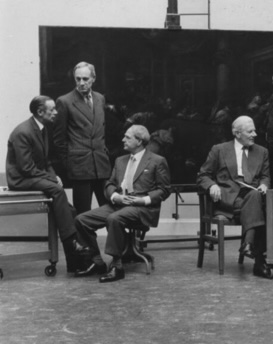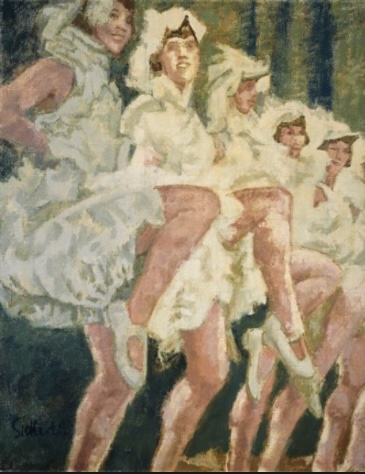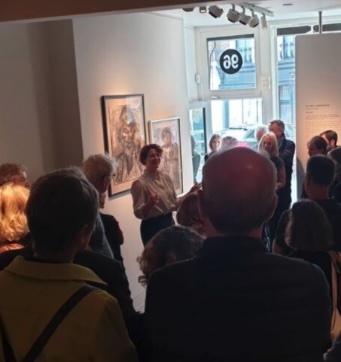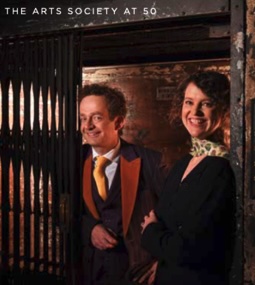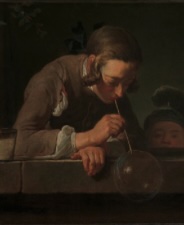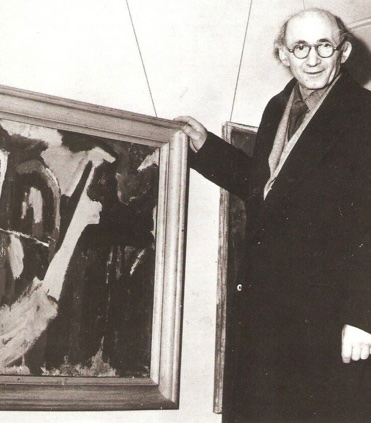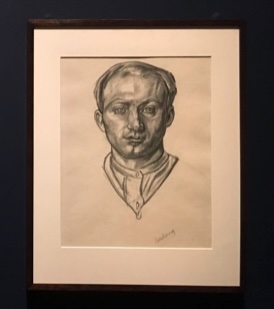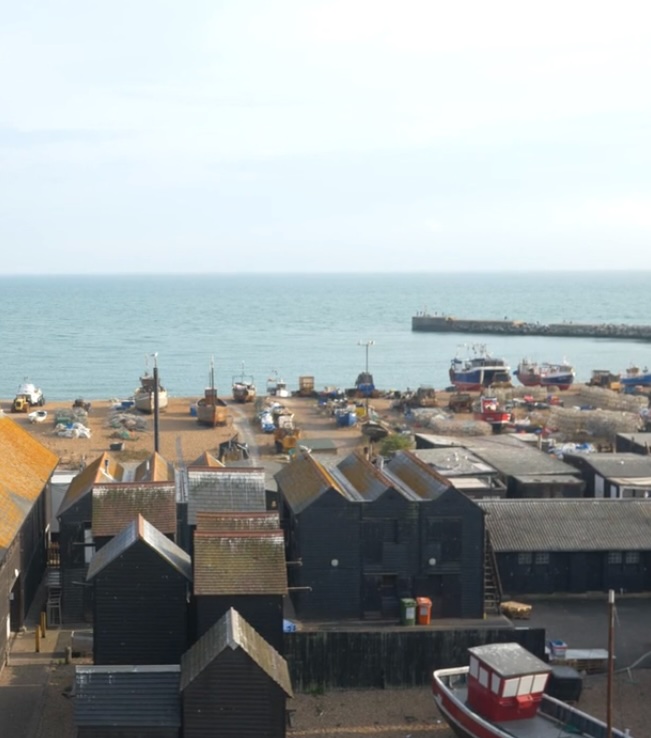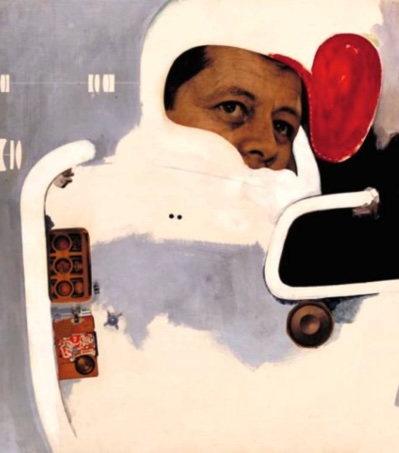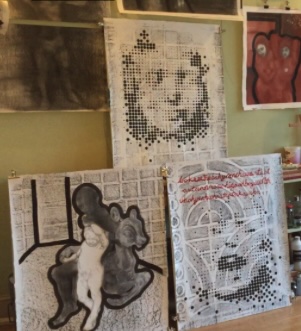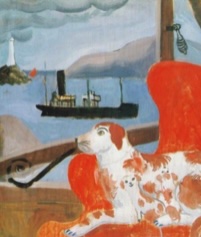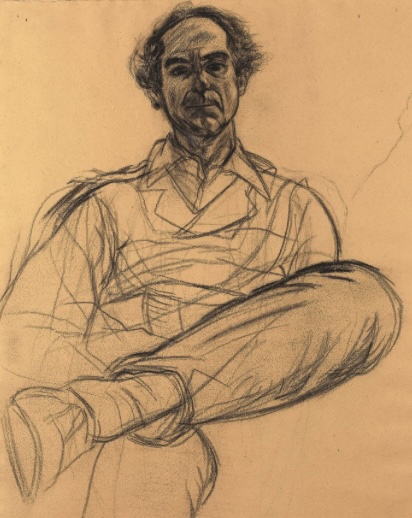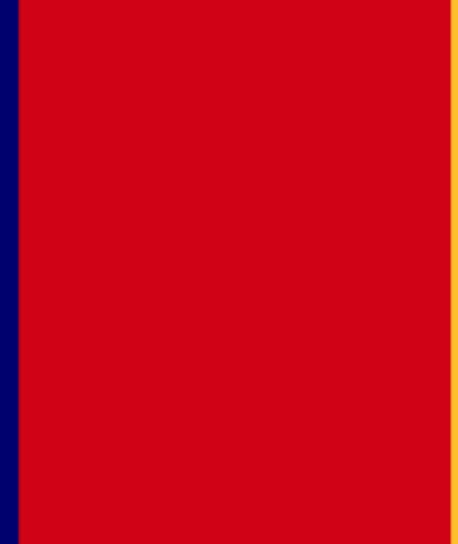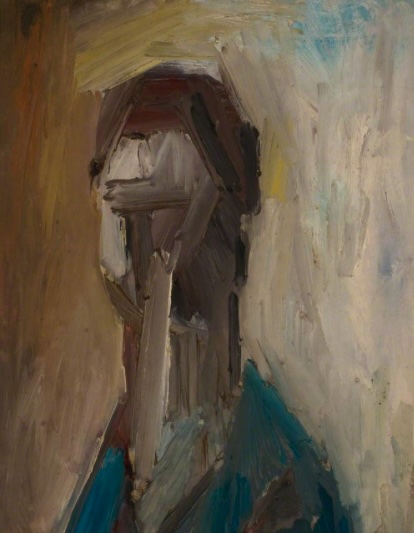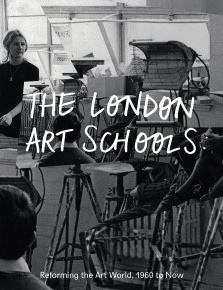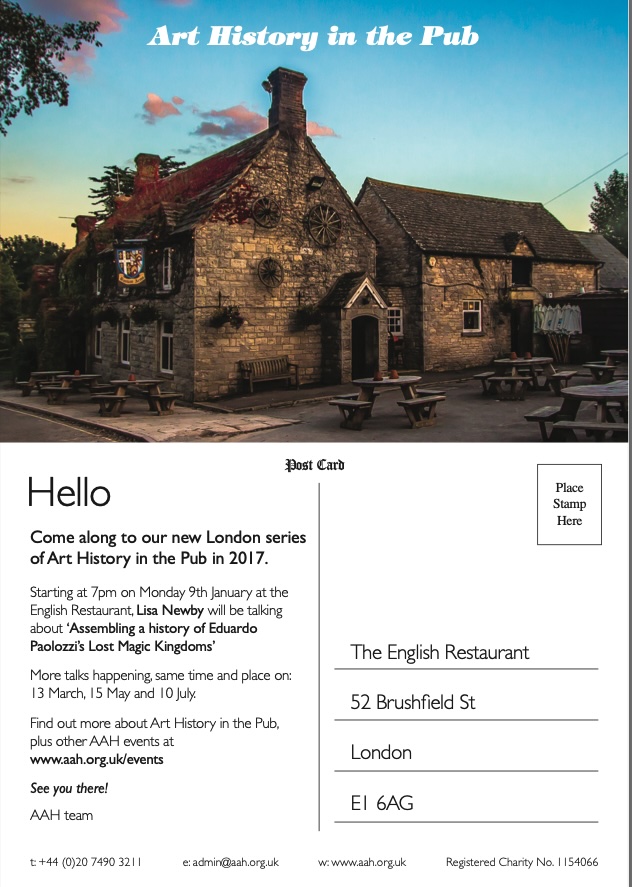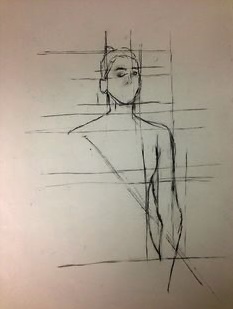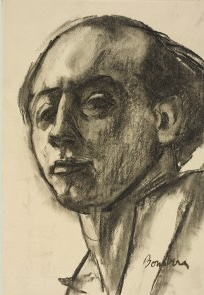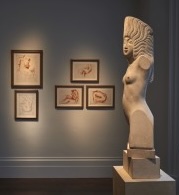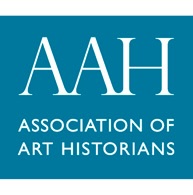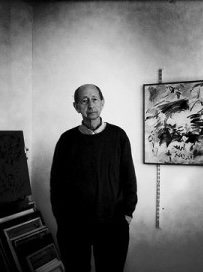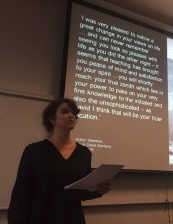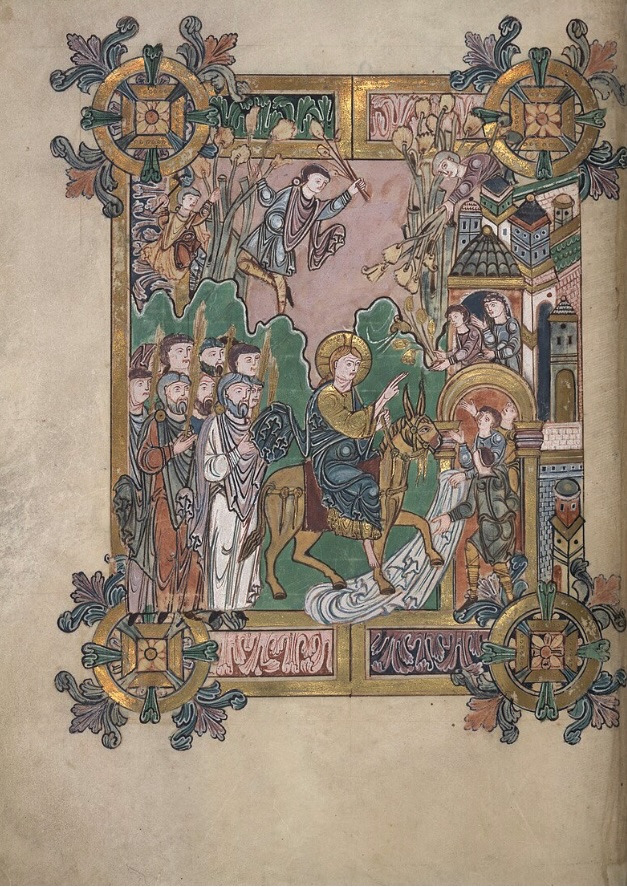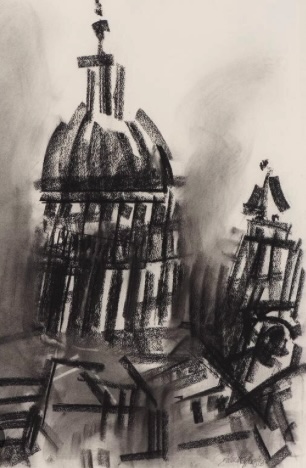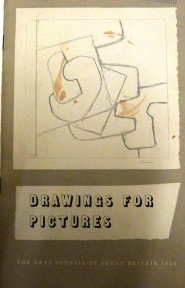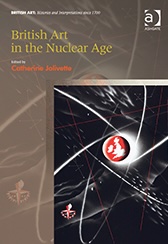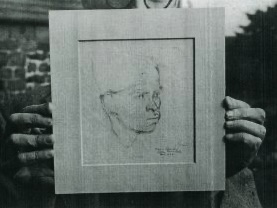For my full CV click here.
Selected Announcements, Papers and Publications
Unruly Britannia: The Brit Art Renaissance of 1945-1970
Courtauld Institute of Art, Summer School Intensive, Course 10
Monday 24 – Friday 28 June 2024
Unruly Britannia is back! Join me for a week-long immersion within British art during the ‘Swinging Sixties’ as we explore how and why it became such an important global brand. This’: the course considers the rapid artistic developments that led up to and constituted this exciting, rebellious and innovative decade, which culminated in London becoming one of the world’s capitals of art.
Charcoal and Chiaroscuro: Frank Auerbach’s Graphic Portraits and Post-war Culture, The Courtauld Institute of Art , 8 March 2024
Proud to have taken part in this study day celebrating the Courtauld Gallery’s exhibition dedicated to Frank Auerbach’s early portrait drawings from the 1950s and 1960s. Organised by Altair Brandon-Salmon, Ph.D. candidate in Art History, Stanford University, Dr Barnaby Wright, Deputy Head of The Courtauld Gallery and Daniel Katz Curator of 20th Century Art and Professor Mark Hallett, Märit Rausing Director, The Courtauld.
‘A Painter’s Painter: Considering the Legacy of William Coldstream’, Chapter in forthcoming anthology: Bill Coldstream Remembered: Portraits of a Painter, Coldstream Press, Oct 2024
Coldstream’s legacy, like his life, defies simple interpretation and conventional narratives. He was a radical artist and an establishment mandarin, a beloved teacher and a distant figurehead. He continues to inspire and influence people across the British art world, not only with an idiosyncratic method and aesthetic vision but also via the professionalisation of the British artist, which has been one of the nation’s defining features on the world’s stage in recent decades.
‘Occluded Depths’, chapter in anthology: Frank Auerbach, Drawings of People, Yale University Press, October 2022
I am proud to announce my participation in the first extended study of Frank Auerbach’s remarkable portrait drawings. My chapter, ‘Occluded Depths’, considers Auerbach’s relationship with drawing – as a tool and as a set of material possibilities – in addition to his relationship to the international assortment of artists, who, beginning in the middle of the 1950s, re-established drawing as a vehicle of ambitious artistic practice.
Special Screening of Walter Richard Sickert Documentaries
British Film Institute, London, Tuesday 25 July 2023
Introducing and moderating an evening of appreciation for one of the most influential figures in twentieth-century British art, the painter Walter Richard Sickert (1860–1942) with two ground-breaking documentaries, John Read‘s Walter Sickert: Painter of the Third Floor Back of 1954 and Jake Auerbach‘s Sickert’s London of 1992, followed by an in conversation and Q&A with Auerbach.
A Sense of the Underneath: A tour appreciating the evolution of Frank Auerbach’s drawing practices, Piano Nobile Gallery, 22 Oct 2022
A special event organised by The Piano Nobile Gallery in celebration of their outstanding exhibition Frank Auerbach: The Sitters (23 Sep – 16 Dec 2022). The talk and tour considered key masterpieces from Auerbach’s long and prolific career, unpacking his rich relationship with drawing, the evolution of his craft, and why it is that his works on paper can be so mesmerising.
Review of Walter Sickert (Tate Britain, London) 19: Interdisciplinary Studies in the Long Nineteenth Century, August 2022, Journal based at Birkbeck, University of London
Walter Richard Sickert (1860–1942) was master of the dramatic moment. He had a broad, roving intelligence and he gives one the impression of being a man whose mind seemed to move more quickly than his brush, and whose gift for imbuing narrative tension was matched only by his apparent boredom with his own easy facility with paint.
Anniversary: The Arts Society, 2017-2022
Celebrating five years working with the Arts Society (formerly The National Association of Decorative and Fine Arts or NADFAS). From my involvement with the launch of the Society’s Lecturing Academy, these years have encompassed much, including adapting to the pandemic. I feel privileged that during this time, I have been invited to deliver 46 talks (and counting) and included locations from as far away as Jersey, West Cornwall, and Southport.
To Tame a Bubble, a Homo Bulla Project, Fellowship/Artist in Residence, Institute for Advanced Study, 2020-2021, Central European University, Budapest/Vienna – Canceled due to Covid Pandemic
‘To Tame a Bubble’ emerges from my technical, emotional and intellectual fascination with how the ideals of European humanism – including the hope that we could cultivate ourselves into peaceable, constructive beings apart from the human as animal (to tame ourselves) – have failed or saved us in light of new socio-political and climatic events – sadly this project was cancelled due to the onset of the pandemic and personal illness.
David Bomberg’s Lost Legacy: A Master Painter and his Students, London Art History Society, London
A talk discussing the power of one of the most passionate, pugnacious and under appreciated painters in twentieth-century Britain. Neglected for much of his lifetime, David Bomberg (1890-1957) has only recently been rightfully celebrated with exhibitions at galleries across the country. This hour-long talk explores what it in his painting that touches a nerve today as much as it did for the talented group of artists who studied with him. From Frank Auerbach and Leon Kossoff to Dennis Creffield, Bomberg’s passion and craft revived the British tradition of expressive naturalism and created a visual language that remains very much alive today.
Artist Versus Teacher: The Problem of David Bomberg’s Pedagogical Legacy, Tate Papers no.33, 2020
David Bomberg (1890–1957) left two legacies: as a pugnacious, experimental painter, and as one the most influential teachers in the post-Second World War period. In the latter role, he inspired a particular artistic identity within generations of art students, some of whom, including Frank Auerbach and Gustav Metzger, have become well known. These dual legacies sit uneasily with one another, largely because Bomberg’s parallel activities of teaching and painting during the later part of his career (c.1948–1957) have been treated as oppositional, leading observers, critics and art historians to ignore how each affected the other. This paper discusses the content and community of Bomberg’s influential teaching at the Borough Polytechnic, arguing that teaching was beneficial for Bomberg’s art and that his late work deserves reappraisal.
The School of Thick Paint: David Bomberg at the Borough Polytechnic, National Gallery, London, 15 Feb 2020
In commemoration of the exhibition Young Bomberg and the Old Masters (27 Nov 2019 – 1 Mar 2020), please join Richard Cork, David Boyd Haycock, Leon Betsworth and myself to discuss Bomberg in the context of artist-led art education.Click here to download the study day’s programme: NG_15Feb2020
David Bomberg’s School of Thick Paint: A Master Painter and His Students, Hastings Contemporary, 29 Sep 2019
In celebration of Hastings Contemporary re-opening and its timely exhibition of Roy Oxlade’s artwork, this hour-long talk explores the relationship between Oxlade’s cohort at the Borough Polytechnic and their teacher David Bomberg. We will immerse ourselves in how the passion and craft Bomberg inspired in his students grew into a visual style that remains very much alive today.
Taking on the World: Twentieth Century British Visual Culture, Yale in London & The Paul Mellon Centre for Studies in British Art
Undergraduate Module, Summer 2019
This advanced undergraduate course considers the rapid artistic developments throughout twentieth-century Britain, which culminated in London becoming one of the world’s capitals of art during the ‘Swinging Sixties’ with the rise of Beatlemania, Pop Art and conceptualism among other cultural thrusts. Drawing on the collections in numerous museums, galleries and art colleges across London, this course will be a mix of classroom discussions and field trips responding to art objects and both primary and secondary textual sources.
Blueprints For An Emergent Personality, Vertigo Starts Art Residency with the AMORE Lab, 2018-2019, European Commission and Universitat Pompeu Fabra, Barcelona
Blueprints was created as a Vertigo Starts Residency (2018-2019) in collaboration with AMORE at the Universitat Pompeu Fabra, Barcelona, a computational linguistics lab developing a form of AI which explores the phenomenon of childhood language acquisition, especially reference. The artistic aim of the residency was to visually explore the representation of non-human personalities using data from the AMORE model lab.
Primitivism, Realism & Everything in Between, a two-part art Course at Pallant House Gallery, Chichester, 18 & 25 Jul 2018
A two-part study day examining the concept of skill in 20th century British art, from the emulation of naïve art by Christopher Wood and Ben Nicholson in the 1920s to the desire for expressive freedom among David Hockney, R.B. Kitaj and many others in the 1950s and beyond.
The British Drawing Revival of the 1960-70s, a three-part art course at Pallant House Gallery, Chichester, 6, 13 & 27 Jun 2018
A three-part study day exploring how diverse artists working in Britain participated in a revival of drawing in the 1960s and 70s. From R.B. Kitaj and David Hockney to Frank Auerbach and Barry Flanagan, drawing’s potential, as liberated from preparatory work, was widely explored and appreciated. This series looks at the often overlooked role played by drawing in the rebellious momentum of the British twentieth-century.
Who’s Afraid of Red, Yellow and Blue? The Colour Revolution in Mid-Century New York City, Courtauld Institute of Art, 13 Mar 2018
Lecture for the Showcasing Art History series looking at how following from World War II, New York artists grappled with the lingering effects of art historical meanings for individual hues and encountered innovative technologies that gave colour new possibilities. Consumer culture, led by the rise of colour TV, added a novel vernacular element, leading to collective understandings of colour that have since been normalised across the Western world. Artists’ responses in 1950s and 1960s were as varied as they were explosively creative, investigating not only the properties of colour itself (Barnett Newman, Ellsworth Kelly) but also texture (Josef Albers, Mark Rothko) and its symbolism (Andy Warhol, Roy Lichtenstein). This talk will examine some of these developments in colour, situating them within the broader culture and exploring the sometimes perplexing power of these pieces.
Style Cults & the School of Thick Paint, contribution to ‘Art by the Many‘, a conversation piece coordinated by Thomas Crow in British Art Studies 7, 30 Nov 2017
‘The importance of style cults in providing a vernacular charge to fine art achievements in the Britain of the 1960s, as argued for by Tom Crow’s opening provocation, is compelling and raises further questions about how art markets and historians have handled and could handle collective activity, including re-evaluating collective identity…’
David Bomberg’s Teaching and his Pupils, Pallant House Gallery, 9 Nov 2017
Commissioned for the major retrospective, ‘Bomberg’, at Pallant House Gallery (21 October 2017 – 4 February 2018), the hour-long talk explored Bomberg’s teaching and its influence on the practices of canonical figures in British 20th century art, including Dennis Creffield, Gustav Metzger, Leon Kossoff and Frank Auerbach, among others.
A Garden Shut Up, a Fountain Sealed: Review of Sussex Modernism: Retreat and Rebellion exhibition at Two Temple Place for 3rd Dimension – The PMSA Magazine
Garden Statue – The Virgin (1911-12) greets the visitor entering ‘Sussex Modernism: Retreat and Rebellion’ at Two Temple Place in London (fig.1). It makes for a striking beginning: a weathered, monolithic piece exuding a presence far greater than its material form. […] This is emphasised by a nearby photograph of Fry’s daughter, Pamela, all unselfconscious adolescent joie de vivre, climbing on the statue’s back. This constellation of factors accentuates what is elsewhere subtle: that this exhibition is not so much a showcase of art objects as it is of relics of greater attempts to live according to one’s creative ideals.
Creating Artists, Review of The London Art Schools: Reforming the Art World, 1960 to Now for Art History 40:1, Feb 2017: 200-4
In the timely and eclectic volume edited by Nigel Llewellyn with Beth Williamson, five contributors ‘describe the distinctive journey that the London art schools have made’ . What emerges is a proposition that responds to an older question, one most clearly articulated in 1965 in the first lines of Private View, the influential, 298-page précis of the British art world: ‘Just what has turned London into one of the world’s three capitals of art? Who did it, and how? And what kind of people are they?’
Re-Launch: London branch of Art History in the Pub, The Association of Art Historians, co-organized by Judith Jammers and me, Jan-Jul 2017
Inaugural talks will be: Lisa Maddigan Newby (Doctoral Student at the University of East Anglia) presenting ‘Assembling a history of Eduardo Paolozzi’s Lost Magic Kingdoms’ on 9 Jan; Eckart Marchand (Assistant Archivist at the Warburg Institute) presenting ‘From the migration of motifs to the emigration of scholars: The Warburg Institute’ on 13 Mar; and Lotfi Gouigah (Doctoral Student at McGill University, Montreal) presenting ‘Flesh and Time: Lynn Hershman Leeson, Feminism and Performances of the Life-like’ on 15 May.
William Coldstream and the Art of Measuring, The Piano Nobile Gallery, London, 17 Dec 2016
William Coldstream’s peculiar method of working – measuring precise relationships using a pencil held at arm’s length – has overshadowed his artistic production. Described and derided by many as “objective”, both the method and the works are both reconsidered in this talk, in which I disentangle the various strands of objectivity and subjectivity in Coldstream’s practice, finding the raw emotion at the heart of his paintings. Gallery talk in honour of the upcoming exhibition at Piano Nobile ‘William Coldstream | Euan Uglow: Daisies and Nudes’ from 22 November to 28 January.
Teaching Integrity: David Bomberg’s Class at the Borough Polytechnic, The Towner Art Gallery, 31 Jul 2016
David Bomberg famously proclaimed that art could not be taught, and yet he did teach. His approach, often called the search for ‘the spirit in the mass’, became a rallying cry to meld self, subject and art. It went far beyond a mere process of creation to become instead a sense of personal integrity known through artistic expression. This talk explores the details of Bomberg’s instruction and the various ways he influenced the practices of canonical figures in British 20th century art.
True and Pure: Frank Dobson and Eric Gill Drawing From Life, Review of Daniel Katz exhibition in 3rd Dimension – The PMSA Magazine
The complicity between sculpture and drawing is inescapable in True and Pure, an exhibition in which the sleek shapes of pieces by Eric Gill and Frank Dobson are arranged amid the elegant domesticity of the Daniel Katz Gallery’s Edwardian town house in Mayfair. The curation maximises on the echoes between drawing and sculpture, space and displaced space, destabilising the autonomy of the sculptures and enhancing the autonomy of the drawings while maintaining the dignity of each and allowing Dobson’s under appreciated drawings to emerge as the true stars of the show…
The Irresistible Rise of the Independent Art Historian, AAH Bulletin 122, Jun 2016
The new issue of the AAH Bulletin is out. Click below to read my Chair Report:
June 2016: Bulletin 122 F&I report.
I served as the leader and Chair of the Freelance and Independent Committee of the AAH from 2015 to 2018 representing the interests of freelancers and extraordinary art historians of all kinds.
Dennis Creffield in Conversation, Borough Road Gallery, London, 12 May 2016
A conversation with Dennis Creffield, a distinguished artist and attendee of Bomberg’s classes from 1947-1951 as well as the youngest elected member of the Borough Group. Bomberg’s approach had a significant, and lasting, impact on Creffield’s practice. Creffield will describe his experience of being taught by Bomberg as a young man. The discussion will look at Bomberg’s approach, the atmosphere and dynamic of this unique pedagogic setting, Bomberg’s legacy, Creffield’s practice and more.
Leader among Equals: The School of Bomberg and Art School Reform, Borough Road Gallery, London, 28 Apr 2016
Paper commissioned for Keep the Paint Moving: David Bomberg and the Art of Radical Teaching (22 April – 2 July 2016) that addresses ways to understand Bomberg’s teachings against and within the rapid changes in art education in mid-twentieth century Britain
A Signature of Our Race: Herbert Read and the Line that Links Medieval Illumination and 1930s British Modernism, article in ‘Medieval Modernity: Revisiting the Middle Ages in the 20th century’, special issue of Visual Resources, Vol XXXII, no. 1-2, 21 Mar 2016
In an article in The Burlington Magazine of 1933, British theorist Herbert Read (1893–1968) proposed “a basic linear signature of our race.” His invocation of line as a mark of identity is representative of a wider community of thinkers who linked the British avant-garde with medieval illumination via the watercolours of the late eighteenth and early nineteenth centuries. […] Amid concerns over mounting political extremism, notions of medieval art were useful as emblems of British precedent for sustainable and proud work. This paper traces the use of line at the time, most notably by Herbert Read, as a symbolic mark that promoted a balance between individualism and collectivism through its connection to the medieval period.
Mark of the Times: Charcoal and the Borough Group, article published online by The Borough Road Gallery, London Oct 2015
Paper placing the drawings within the exhibition, The Elemental Force of Charcoal: Drawing at the Borough(23 October 2015 – 27 February 2016) in a wider context, with reference to seismic shifts that occurred in arts education and drawing practices of the 20th century, as well as the historical use of charcoal as a medium. It is a written version of a tour presented on 29 January 2016 at the Borough Road Gallery as part of SLAM Fridays .
Drawing Done with Intellectual Care: David Sylvester’s Drawing Exhibitions and the Shaping of the Creative Individual, paper presented at Exhibiting Contemporary Art in Post-War Britain, 1945–60, a conference co-organised by Tate and The Paul Mellon Centre for British Art, 28–29 Jan 2016
Critic and curator David Sylvester played a pivotal role shaping the intellectual as well as the actual consumption of avant-garde art in the post-Second World War period and yet a key series of exhibitions he curated, focusing on the practice of drawing in the 1950s and early 1960s, has been all but ignored. Drawing for Pictures (Arts Council, 1953), Recent British Drawings (ICA 1954) and Drawing Towards Painting (Arts Council, 1962) all steered public engagement with the eclectic and often private practices of drawing at a volatile moment for art institutional structures in Britain. This paper re-examines these significant exhibitions in order to consider Sylvester’s, and by extension Britain’s, place at the forefront of the subsequent rise in international exhibitions devoted to drawing practice. Click here for full paper.
TRT World Showcase discussing Ellsworth Kelly, 29 Dec 2015
The Pasmore Report?: Reflections on the 1960 Coldstream Report and its legacy, paper presented at The Art School Educated Conference, Tate Britain, 11-12 Sep 2014
The publication of the First Report of the National Advisory Council on Art Education (1960), otherwise known as the first ‘Coldstream Report’, is a graspable moment of displacement in the British art world. It represents a shift between an educational system based on disciplined studies of techniques and crafts to one based on conceptual thinking and design. Its legacy is marked by trauma and confusion that deepened as the decade matured, spilling over into creative outbursts and political revolt. It has become a symbol of oppressive, narrowly defined rigour and prejudiced artistic values. As such, both the report and the painter and educator who leant it his name, William Coldstream, have been blamed and demonised. This paper presents my research within the ministerial archival records (opened in the late 1990s) in order to readdress intention and effect within this much scapegoated event.
The Aesthetic of Scientific Authority in a Nuclear Age: Jacob Bronowski and Feliks Topolski, chapter in British Art in the Nuclear Age, ed. Catherine Jolivette; Ashgate, 2014
Winner of the Historians of British Art‘s 2014 Multi-Author Book Award.
Celebrity historian of science Jacob Bronowski interpreted Polish émigré artist Feliks Topolski’s use of line as an analogy for science’s use of subjective judgment in the ‘Knowledge or Certainty’ segment of Bronowski’s 1973 BBC television series The Ascent of Man. The culmination of Bronowski’s views on the relationship of scientific authority and epistemological method, the episode examines the ethics of interpreting scientific judgement through Topolski’s particular dynamic aesthetic. As a visual embodiment of Bronowski’s ideal epistemological approach, Topolski’s drawings become instructive rather than merely aesthetic – helping a public removed from scientific realities to conceptualise the language and significance of subjective (and thus fallible) judgement as a possible alternative to unreflective technocracy. Through addressing the developing paradoxes for nuclear scientists as authorities in the 1950s and Bronowski’s decades-long engagement with these discussions, it is possible to trace the seeds of that later collaboration, which was formulated around the hotly debated twenty-five year anniversary of the atomic bombings in Japan.
Attitudes to drawing in Britain, 1918-1964, Doctoral Thesis, University of East Anglia, 2013
Numerous artists and theorists in Britain between 1918 and 1964 produced rich bodies of drawing-orientated work, yet these endeavours receive little analysis. In order to account for them as more than isolated anomalies, the nature and importance of drawing during the period needs to be reconsidered – not only within private practices, but also as a concept in the wider cultural field. When engaging with a medium that does not have a fixed identity, and so does not remain stable within a historical narrative, it is not enough to write figures back into history; it is necessary to excavate a history for figures to be written back into. The history of early-twentieth-century Britain must include the full spectrum of significant permutations of the concept of drawing, and this thesis takes steps toward uncovering these permutations and analysing their development in relation to each other. Available for download via EThOS, British Library

